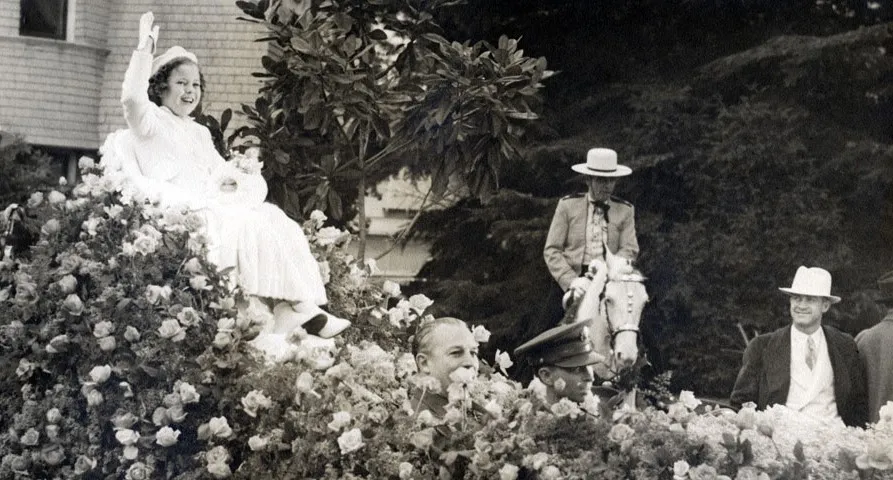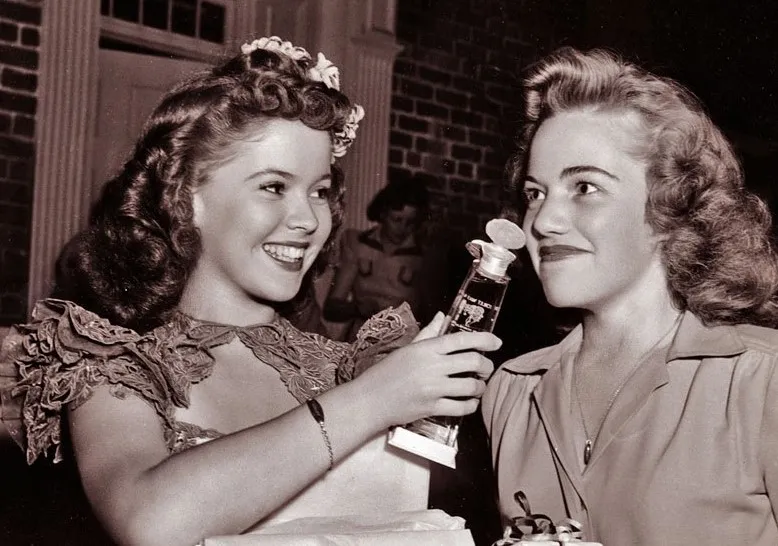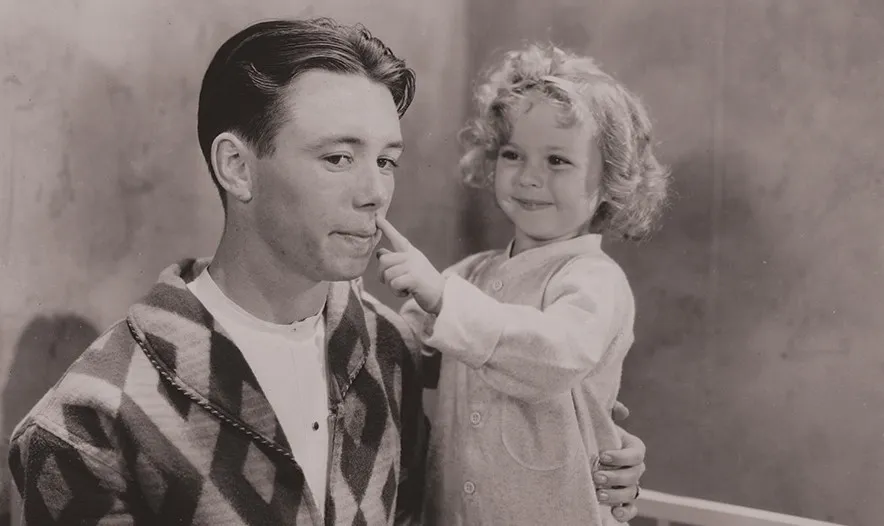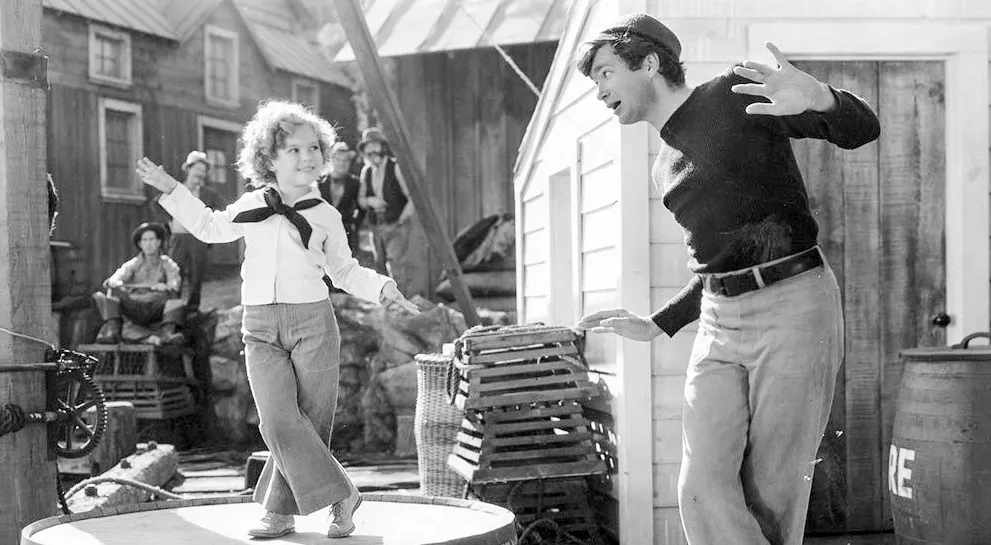Shirley Temple, the iconic child star of the 1930s, was known for her charming performances and remarkable screen presence. By the early 1940s, as Temple transitioned from child roles to more mature parts, her career took on a new dimension. One of her notable performances during this period was in the 1944 film I’ll Be Seeing You. This film not only marked a significant step in her career but also showcased her versatility as an actress.
The Plot of I’ll Be Seeing You

I’ll Be Seeing You, directed by William Dieterle and released in 1944, is a poignant drama set against the backdrop of World War II. The film tells the story of a young woman named Ginger Rogers, who plays a war widow named Mary. Shirley Temple stars as the young, precocious young girl named Susan who is the daughter of Mary.
The plot revolves around the story of Susan and her mother navigating life during wartime. The film delves into themes of love, loss, and the impact of war on families. It tells a touching story of resilience and hope, with Shirley Temple’s performance adding depth and emotional resonance to the film.
Shirley Temple’s Role and Performance

In I’ll Be Seeing You, Shirley Temple takes on the role of Susan, a bright and spirited young girl. At this point in her career, Temple was transitioning from the child roles that had made her famous into more mature and complex characters.
Susan is a character who brings warmth and light to the film, despite the challenging circumstances of the story.
Temple’s performance as Susan is both engaging and heartwarming. She portrays the character with a natural charm and innocence, qualities that were central to her appeal as a child star.
However, in I’ll Be Seeing You, Temple also demonstrates a growing maturity in her acting. She navigates the emotional depth of her role with a sensitivity that reflects her development as an actress.
The Historical Context of the Film

Released in 1944, I’ll Be Seeing You was a product of its time, reflecting the anxieties and emotions of World War II. The film was made during a period when many Americans were dealing with the effects of the war on a personal level.
It captures the essence of wartime America, highlighting the struggles of families who were separated by the conflict and the hope that kept them going.
The film’s release during this tumultuous period added to its significance. It resonated with audiences who were experiencing similar challenges and uncertainties.
Shirley Temple’s role in the film, as well as the overall narrative, provided a comforting and uplifting message at a time when many were seeking solace and inspiration.
The Impact of I’ll Be Seeing You on Shirley Temple’s Career

I’ll Be Seeing You was an important film in Shirley Temple’s career for several reasons. It marked a turning point as she transitioned from child star to a more mature actress. The film allowed Temple to showcase her range and depth as an actress, moving beyond the roles that had defined her earlier career.
Temple’s performance in the film was well-received, demonstrating her ability to handle more complex and dramatic material.
This role helped to solidify her reputation as a versatile actress capable of taking on a variety of roles. It was a testament to her growth as an artist and her ability to adapt to changing aspects of the film industry.
The Legacy of I’ll Be Seeing You

I’ll Be Seeing You remains a beloved classic, and Shirley Temple’s performance continues to be a highlight of the film.
The film’s themes of love, hope, and resilience resonate with audiences even today, making it a timeless piece of cinema. Shirley Temple’s role as Susan is remembered for its heartfelt portrayal and the emotional depth she brought to the character.
The film also holds a special place in the context of wartime cinema. It reflects the era’s concerns and provides a window into the experiences of families during World War II.
The combination of a compelling story, strong performances, and historical relevance makes I’ll Be Seeing You an important film in the landscape of American cinema.
The Film’s Reception and Critical Response
Upon its release, I’ll Be Seeing You received positive reviews from critics and audiences alike. The film was praised for its emotional depth and the performances of its cast, particularly Shirley Temple.
Critics appreciated Temple’s transition to more mature roles and her ability to handle the dramatic elements of the film with skill and sensitivity.
The film’s reception highlighted Temple’s growth as an actress and her ability to tackle more complex roles. It was a significant step in her career, showcasing her versatility and establishing her as a leading actress in Hollywood.
The positive critical response helped to further cement her place in the film industry and paved the way for future roles.
The Influence of I’ll Be Seeing You on Later Films

The success of I’ll Be Seeing You had a lasting impact on Shirley Temple’s career and the trajectory of her film work. The film demonstrated her ability to handle dramatic material and paved the way for more mature roles in her subsequent films.
Temple’s performance in this film contributed to her reputation as a versatile actress capable of handling a range of roles.
The film also influenced the portrayal of wartime experiences in cinema. By capturing the emotional and personal aspects of life during World War II, I’ll Be Seeing You added a layer of depth to the genre and set a standard for how such stories could be told.
The film’s focus on personal relationships and the impact of war on families resonated with audiences and influenced the depiction of similar themes in later films.
The Cultural Significance of the Film

I’ll Be Seeing You holds a special place in cultural history, particularly in the context of wartime cinema. The film’s exploration of themes such as love, loss, and resilience provided a valuable perspective on the human experience during a challenging time. It captured the emotions and experiences of many Americans and offered a message of hope and perseverance.
Shirley Temple’s role in the film added to its cultural significance. Her performance as Susan was a testament to her talent and versatility, and it contributed to the film’s lasting impact. The film remains a classic example of how cinema can capture and reflect the human experience, providing audiences with both entertainment and insight.

I’ll Be Seeing You (1944) is a timeless classic that showcases Shirley Temple’s talent and growth as an actress. The film’s portrayal of wartime experiences, combined with Temple’s heartfelt performance, creates a powerful and enduring piece of cinema.
As a film that captures the essence of its time while delivering a message of hope and resilience, I’ll Be Seeing You continues to be a cherished part of film history.
Shirley Temple’s role in the film represents a pivotal moment in her career, highlighting her ability to transition from child star to a mature actress. The film’s impact on her career, its critical reception, and its cultural significance all contribute to its lasting legacy.
For those interested in classic cinema and the work of Shirley Temple, I’ll Be Seeing You remains a must-see film that offers both emotional depth and a glimpse into a pivotal era in American history.



